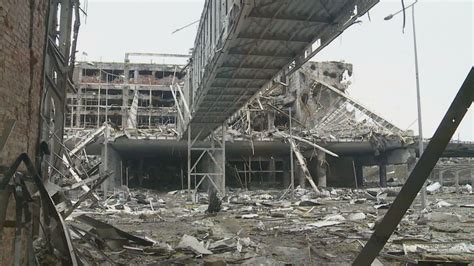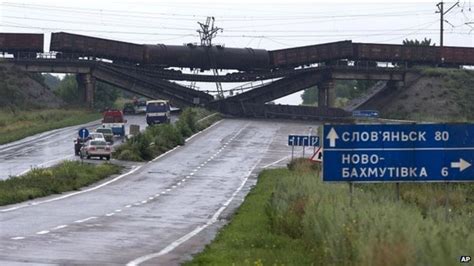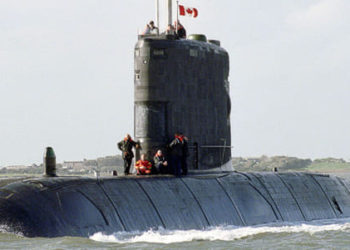A Rebuttal to “It’s Costing Peanuts for the US to Defeat Russia” by Timothy Ash
Greetings. Today’s article will be a rebuttal to an exceptionally dishonest and outstandingly poorly thought out article named “It’s costing Peanuts for the US to defeat Russia” by Timothy Ash. The intent of this rebuttal, which will be sent to Timmy as well as the site that published it, is to break down how wrong the article is.

Analyzing the Claims and Realities
Claim #1: “The cost-benefit analysis of US support for Ukraine is incontrovertible. It’s producing wins at almost every level”.
The Reality:
- Has it actually defeated Russia? Russia is still in Ukraine and mobilized a quarter of a million more forces, as well as procured and resourced an untold amount of war material for the continuation of hostilities. Does the West have another year’s worth of material aid to give Ukraine?
- Did it deter China? China just finished up large and provocative drills threatening Taiwan, hardly a sign of deterrence.
- Is Ukraine in NATO?
- What about the massive impact it has had globally towards non-belligerent parties? How about the utter destruction caused to Ukraine over this “proxy war of opportunity”? The millions displaced and without reliable food, jobs, energy, work, and basic living standards? The sheer destruction of Ukraine is a cost that still needs to be accounted for, especially post-conflict, and the bill for reconstruction.
- Did India, China, Saudi Arabia, Brazil, Pakistan, the entire Global South, and over 65% of the world cut ties with Russia and end their relationship? The answer is NO!
- According to the UN Conference on Trade and Development (UNCTAD), the worldwide economic growth projection for 2022 is now at 2.6% (from 3.6%) because of the ongoing Russo-Ukraine conflict. A mere 1% of the global economy is about a trillion dollars. If this war continues in 2023, and the same projected loss remains the same at 1%, then the loss for two straight years at 1% decline is 2 trillion alone in that single category, a direct result of the conflict.

Global impact on oil and price per barrel at over $100.00. Who pays for that? How much does that cost monthly?
Global impact on LNG prices. The price difference between per cost prior to the war and now. Who pays for that? Someone is and that is costing billions monthly.
Global impact on the stock markets and the significant losses associated with private investments, such as 401(k)s as well as in foreign markets. Who is suffering those losses? We are now talking hundreds of billions, collectively. In the US alone, the domestic market due to this conflict is costing many people their savings, the average is at 34,000 down, per several news outlets and financial reports.
Billions lost in debt owned, according to the Bank of International Settlements (67 billion in France, Austria, and Italy alone) that can no longer be counted on due to this conflict. Global banks are losing billions and asking sovereign nations and insurance companies to underwrite the losses due to policies.
Significant and major increase in costs for global transport and insurance premiums. Who pays for that?
Major impact on food products, especially for nations on the verge of famine. Who pays for that? How many lives and private businesses have been destroyed as a result of this?
National Security Interests and Financial Considerations
Claim #2: “Former President Trump, and others in the US including some Democrats as well as Republicans, have downplayed the risk from Russia and argue that the money should be spent at home”.
The Reality:
The questions that the above individuals asked, as well as the majority of indisputable International Relations experts, historians (Kissinger, Keohane, Mearsheimer, McMaster, Nye, Waltz, Schelling, Ricks, Huntington, and others) have asked are, “What are the national security interests in Ukraine, and why provoke Russia into this war, knowing what would occur and what would happen?”. Others are critical because the time, energy, effort, and capital could and should have been used to confront China, the most significant threat faced by the West, as opposed to Russia. Given that Ukraine has no national security value to the United States, it is especially obvious that during the entirety of the Cold War, the West had zero strategic interest in Ukraine and never once risked conflict over it. History has shown how the Cold War turned out with Ukraine fully owned by Moscow.
Claim #3: “Yet from numerous perspectives, when viewed from a bang-per-buck perspective, US and Western support for Ukraine is an incredibly cost-effective investment. Altogether, the Biden administration received Congressional approval for $40bn in aid for Ukraine for 2022 and has requested an additional $37.7bn for 2022. More than half of this aid has been earmarked for defense”.
#4: “These sums pale into insignificance when set against a total US defense budget of $715bn for 2022. The assistance represents 5.6% of total US defense spending”.

The True Costs of US Aid for Ukraine
The Reality:
- This is not even remotely close to accurate. First, the total amount, assuming that Biden has his latest 38 billion dollar request approved, puts the accurate cost at 100 billion direct, not 77.7 billion as Timmy claims. Further, this is in less than one single calendar year. The rough estimate, if this was the only cost with direct aid to Ukraine, would be at or around 14% of the annual defense budget, not the 5.6% as claimed!
- When other direct costs are associated with this endeavor, the costs are even higher. Consider the following costs associated with aid:
- The costs to transport, feed, sustain, billet, and provision 100,000 deployed US service members to Europe, daily as well as the extra pay they are entitled to.
- The costs for associated training, the costs for maintenance, the costs to ship maintenance-intensive parts to Europe, the costs associated with operations, clean-up of facilities, contractor support, the costs for ammunition for training, the costs for fuel, the costs for the replacement of durable and expendable items, the costs for associated travels. These are costs that are not paid for by the 715 billion dollar budget but from contingency funding by Congress.
- Then there are the costs associated with hundreds of fighters, strike aircraft, aerial tankers, reconnaissance and special mission aircraft, transport aircraft, all requiring extensive maintenance and costs per flight hour, not to mention the costs for aviation fuel and lost airframe hours. Per day, per week, per year.
- The costs of maintaining two separate CSGs and associated naval forces in the immediate vicinity. These too all must be calculated in the cost factor.
- The point is, 9 months into this conflict, these associated, secondary costs, are adding up and will continue into 2023, further compounding the costs associated with this endeavor.
Strategic Challenges and Long-Term Implications
Claim #5: “Russia is a primary adversary of the US, a top-tier rival not too far behind China, its number one strategic challenger. In cold, geopolitical terms, this war provides a prime opportunity for the US to erode and degrade Russia’s conventional defense capability, with no boots on the ground and little risk to US lives”.
The Reality:
While the US can view Russia as an adversary and look for opportunities to deal Russia a major blow, one must ask a rhetorical question of whether or not such action is wise for the cost and return, given that China, who is identified as the primary pacing threat, goes unchecked and ignored in comparison to Russia. Further, to date, even if Russia were to pull out tomorrow, at best Russia has not been dealt a significant defeat, as Russian losses can be replaced within a decade and they are now exceptionally angry and will seek to avenge our actions and all the while are now deeply aligned with China and still have thousands of nuclear weapons, the threat is not even remotely gone.
Claim #6: “How can Russia possibly hope to win an arms race when the combined GDP of the West is $40 trillion, and its defense spending amounting to 2% of GDP totals well in excess of $1 trillion when the disproportionate US defense contribution is considered? Russia’s total GDP is only $1.8 trillion” as well as; “Note also that the war is also pushing NATO partners to quickly increase spending to the 2% of GDP and above target”.
The Reality:
- The EU and US total GDP is not the correct number to look at. One must look at something called Discretionary Spending to obtain the true number of capital that can be allotted to supplement defense spending. Further, the average EU nation spends less than 2.0% on their defense needs, partially due to EU MFF plans that are 5 to 7 years out and funded via codified law and agreements. This means from that annual 40 trillion cited, it is really more like a mere 3 trillion dollars, and we already know most of the EU nations have already begun to dip into discretionary spending to offset energy costs, lost pensions, and tax revenue as well as inflation rising above double digits. Given the US is over 31 trillion in debt and facing double-digit inflation as well, the ability to spend significantly more is not guaranteed, given in less than a year, each US taxpayer gave the equivalent of at least $700 per person to Ukraine, and there is not much more to give.
- Additionally, in NATO, the only members with a viable and capable military spending 2.0% or more are the US, the UK, France, and perhaps Poland and Greece. That is it. This has not changed much since 2014, and projections for 2023 and 2024 it will likely remain the same. Things did not really improve as claimed.
Claim #7: “Second, the war has served to destroy the myth that Russian military technology is somehow comparable to that of the US and West. Remember that Ukraine is using only upgraded second-generation US technology but is consistently beating whatever Russia’s military can deploy”.
The Reality:
Careful Timmy, you just got done claiming “Russia is a primary adversary of the US, a top-tier rival not too far behind China, its number one strategic challenger”. You cannot have it both ways… either Russia is a primary threat that justifies such costs or they are an adversary with subpar weapons, capabilities, and actually quite not the threat they were hyped to be, which would make you hypocritical for disagreeing with various people calling for peace and focusing on China over Russia.
Claim #8: “Helping Ukraine beat Russia surely also sends a powerful signal to China that the US and its allies are strong and determined when challenged on issues of core importance”.
The Reality:
- Is it assumed that Europe will now cut ties with the PRC? How about specifically Serbia, Hungary, Turkey, Germany, Ukraine? The US refuses to cut ties, even despite the volume of intelligence reports about Chinese threats. Did anyone cut a single tie over the numerous human rights abuses the Chinese have committed? Specifically, the 1 million Muslims that were abused? The dangers of arguing a “Value” position is that it cannot be arbitrarily enacted and dependent on the monetary factors.
- China has secured their vulnerable reliance on imported energy via Russia, as well as now added Russia fully into their sphere.
- China has gained greater insight into what the US can do, and thus the US tipped its hand and has not at all deterred China, even according to multiple US senior defense leaders, as well as the recent Biden NDS/NSS release. Surely the recent war games staged proved this.
- While the West damages their economies and deplete their stockpiles for defense, China continues to grow stronger, and now has Russia fully on their side and knows that the domestic populations of both Europe and the US are financially taxed due to this conflict.
Final Thoughts
Claim #9: “In conclusion, on so many levels, continued US support for Ukraine is a no-brainer from a bang-for-buck perspective. Ukraine is no Vietnam or Afghanistan for the US, but it is exactly that for Russia. A Russia continually mired in a war it cannot win is a huge strategic win for the US. Why would anyone object to that?”.
The Reality:
- Cost analysis: Total associated costs for what gained exactly? The total cost is still unknown, as is the outcome of this conflict.
- What we do know, is that the costs are well above at least two trillion dollars for the West, directly, if we factor in energy costs, global stock market losses, global shipping costs, insurance costs, global food shortages, the loss of investments particularly inside the US, the loss of global GDP by a mere 1%, the production cost increases, the loss of tax revenues due to citizens having to curtail spending, losing their jobs and businesses, inflation costs, the mountainous costs associated with rebuilding Ukraine post-conflict, the costs of daily military support, military deterrence postures, military presence patrols, associated maintenance costs, etc. The costs are growing each day, and each day Ukraine is further being eroded as a nation. These are the total costs, and for what exactly? Did Russia fall? Is there no more Russia? Will they never build another tank? Did their thousands of nuclear weapons magically vanish? Will they never have a ground force again? Hardly. At best this is a bloody nose for Russia, one they will heal from and seek revenge for, regardless of the outcome in Ukraine.
And this is why the most dangerous people around are those who possess the traits of being industrious and exceptionally stupid.
-Mel Daniels









